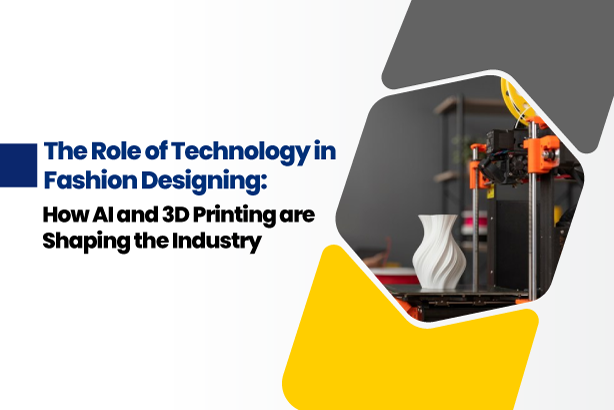Recently, the fashion industry has always been on the top for creativity and innovation because of technology and artificial intelligence. From manufacturing to marketing and sales, you can see the technology implementation and it has highly impacted the fashion industry. AI technology gives better options and solutions for creating, distributing and consuming design.
With 3D printing technology, the fashion design industry benefits highly and is able to achieve their business objectives. The concept of technologies that designers should be aware of before entering into the industry and thus the best fashion designing colleges in Coimbatore understand the market growth and profits. This article shows how AI and 3D printing have a strong role in the fashion industry.
Role of AI in the Fashion Industry:
1. Designing Apparel: Clothing requires lots of trial-and-error processes without compromising creativity. With AI, designers can create new designs which are more efficient and accurate. It also contributes design concepts and brainstorms the inputs for designing, making the designers focus on refining the designs. Along with that, there are various information and fashion blogs about consumer buying habits and styles making designers understand the market better.
2. Manufacturing: In the fashion business, AI is also changing how clothes are made. Production lines can be optimized using algorithms to cut waste and boost productivity. AI is also capable of forecasting consumer demand for particular goods and modifying production plans accordingly to minimize excess and low production. To enhance worker safety and lower manufacturing costs, more intelligent robots are being utilized to carry out activities like cutting and stitching materials that are either too repetitive or risky for human workers.
3. Personalization: Primarily in the clothing industry, the Internet of Things and personalization are becoming increasingly significant. Artificial intelligence (AI) algorithms may evaluate consumer data, including things like purchase histories and social media activity, to better understand people and their preferences. This makes it simpler to suggest goods that are likely to be appealing to them. Using body measurements and stylistic preferences, AI can produce customized designs that let customers develop goods that are specifically catered to their wants and interests.
Retail experience: The shopping experience for consumers is changing as a result of artificial intelligence. Robots that are driven by AI may offer personalized product recommendations, respond to queries, and assist clients in finding the goods they need. AI can also give retailers insights into customers’ purchasing habits and preferences, enabling them to design more interesting and individualized shopping experiences.
Data Analysis: In the realm of fashion, trends can shift quickly. Even before items rush off the shelves, what is in style now will be out of date tomorrow. Many fashion designers are using AI-powered data analysis to keep up with this in order to be able to forecast the route that the next trend will most likely follow. The best way for them to foresee change and provide the appropriate goods for the public is in this way.
Benefits of 3D printing in the fashion industry:
1. Efficiency: The potential of 3D printing in fashion has now grown in the design and production process and actually comes with various benefits for the fashion industry. It means, the conventional manufacturing technique requires various models and redesigns which may slow down the executing process and takes too much time. Whereas the designers can transform their concepts into physical products with 3D printing. It actually reduces the time required for conceptualization and designing. Thus, 3D printing makes a productive and speedy product development cycle which benefits the enterprises.
2. Customization: Nowadays people like to wear customized and well-established brands which is possible with 3D printing. It means one size is not fit for all as everybody has different body prepositions and sizes, which results in the conventional mass production frequently falling short of meeting specific requirements.
Thus, designers depend on 3D printing and make customized clothes and accessories which are comfortable and fit. This actually improves the customer experience and personalization also reduces the waste with the requirement for additional inventory.
3. Sustainability: The fashion industry has two unresolved issues like rapid growth of style and excessive waste which actually harms the environment. 3D printing comes with the solution of lowering material waste and an environment-friendly alternative.
Traditional manufacturing processes always have the issue of wasting the surplus fabrics which 3D printing breaks by producing the required amount of clothing. This waste reduction can contribute significantly to the environment’s improvement and the fashion industry’s transition to a more sustainable future.
Hope, this gives a clear idea of how the fashion industry warming up the automation and the level up to reshape the fashion landscape. This growth strongly indicates students’ need to be aware of these technology roles in the fashion industry and the top b des colleges in Coimbatore are aware of incorporating them in their five-year degree courses.






